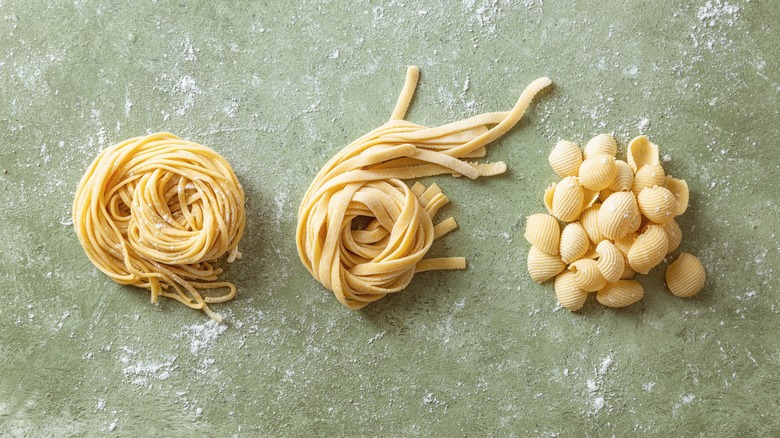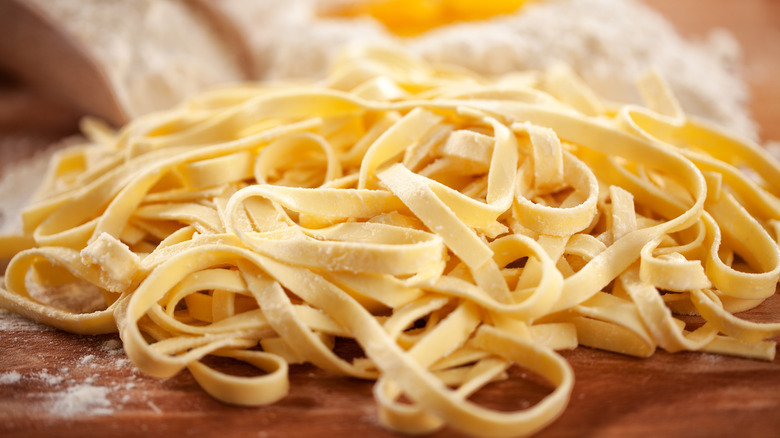The Important Step You Can't Skip When Making Homemade Pasta
Compared to opening a box of store-bought pasta, making homemade pasta is definitely more time-consuming — but it's absolutely worth it. The taste and texture of fresh pasta can't be beat, and is leaps and bounds above any boxed pasta you can buy. Even though the process takes some time, it's important not to rush it. One part you definitely don't want to skip is letting the dough rest. Missing this step will have an impact on your dough, and your ability to work with it. Fortunately, it doesn't need too terribly long to rest — just 10-30 minutes.
For homemade pasta success, be sure to choose the best flour for pasta – 00 semolina flour offers the right texture and gluten content. Once you have your ingredients ready, use the classic volcano method to combine your flour and eggs. After kneading the dough until it's smooth and elastic, it's time to cover it and let it rest at room temperature. This short resting period makes a big difference when it comes time to roll it out. After 10-30 minutes (or up to an hour if you have the time), your dough will be ready to work with. Roll it out to your desired thickness, cut it into your favorite shapes, and you're on your way to fresh pasta perfection.
Why pasta dough needs to rest
It can be tempting to skip the resting part and jump straight into rolling or cutting your pasta dough. But resting isn't just a formality — it's what gets the dough to a workable point and ensures optimal results. This step gives the flour time to fully absorb the eggs, leading to proper hydration and a texture that's much easier to roll and cut. Rested dough becomes more pliable, resulting in well-formed noodles that hold up beautifully when cooked.
When you mix flour with eggs, gluten begins to form. This protein creates a network that provides strength and elasticity to the dough. If you try to work with the dough before it's had time to rest, this gluten network is still developing and may leave the dough stiff and unyielding. By letting the dough rest, you're allowing the gluten to relax, making the dough far easier to work with. Skipping this step could leave you struggling with uncooperative dough, which ultimately makes the whole process more challenging and time-consuming than simply allowing it to rest.
So, while a little patience is required, it's well worth it for perfect noodles. And while you're at it, don't forget to pair your homemade pasta with a delicious homemade sauce for the full experience.

